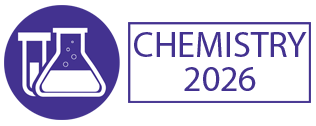Title : Equilibrium, kinetics and thermodynamic adsorption studies of symmetrical reactive dyes in aqueous-based dyeing and non-aqueous reverse micellar dyeing of cotton fabrics
Abstract:
Cotton textile dyeing consumes enormous amounts of energy and water and discharges large amount of wastewater and pollutants. Minimized discharge of the wastewater from the cotton textile dyeing has been under high demands from textile industry. A novel reactive dyeing technology of using a non-aqueous medium with water confined in well-defined reverse micelle using non-ionic surfactant was developed for cotton fabrics. Adsorption, thermodynamic and kinetic studies of symmetrical reactive dyes in cotton fibres were investigated. Compared to traditional water-based dyeing system, cotton fabrics demonstrated better colour depth, higher rates of dye uptake and fixation at 80oC for symmetric reactive dye conformation encapsulated in reverse micelles. Symmetrical molecular structure of reactive dyes in aqueous and non-aqueous media showed different light absorption spectral characteristics and photophysical properties. Different adsorption and isotherm and kinetics models were applied to the experimental data to elucidate the mechanism of the dye uptake process on cellulosic fibre surfaces, which is characterized as a combination of dye adsorption at the fibre surface and diffusion transfer from the surface into subsurface regions of the fibre. Kinetic analysis confirmed that the adsorption process mainly followed a pseudo-second-order model, suggesting the involvement of a chemisorption mechanism. Thermodynamic evaluation showed that the adsorption was endothermic (ΔH° > 0) and spontaneous (ΔG° < 0), accompanied by an increase in the disorder of the solid–liquid interface (ΔS° > 0). The calculated activation energy (Ea) was 117.13 kJ/mol for aqueous dyeing and 81.55 kJ/mol for reverse micellar dyeing, further supporting the degree of chemisorption. The equilibrium adsorption of reactive dye with symmetric conformation follows the co-existence of surface coverage of dye intermediates (Nernst adsorption isotherm) and monolayer adsorption (Langmuir adsorption isotherm) as the best-fit isotherm.
Complementary X-ray photoelectron spectroscopy (XPS) provided compelling evidence from the chemical interaction between reactive group of dye molecular moiety in symmetric conformation and surfaces of cellulosic fibre from inner atomic orbital regions of major elemental peaks. Our observations indicate that symmetric dye molecular structure in dispersion medium under various dyeing temperatures significantly influences the extent of dye adsorption on cotton fibres.
This study provides a foundation for understanding the dyeing mechanism of reactive dyes encapsulated in reverse micelle and offer guidance for optimizing the dyeing process in practical production settings.




